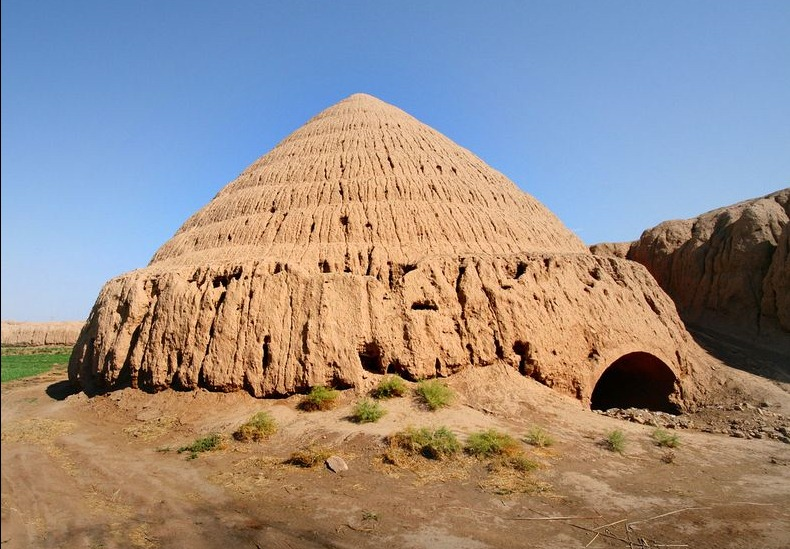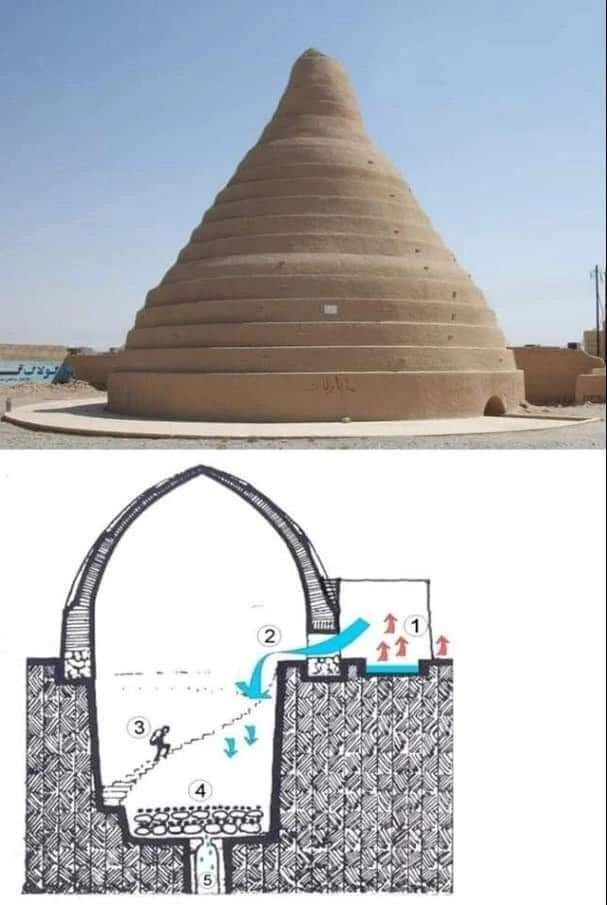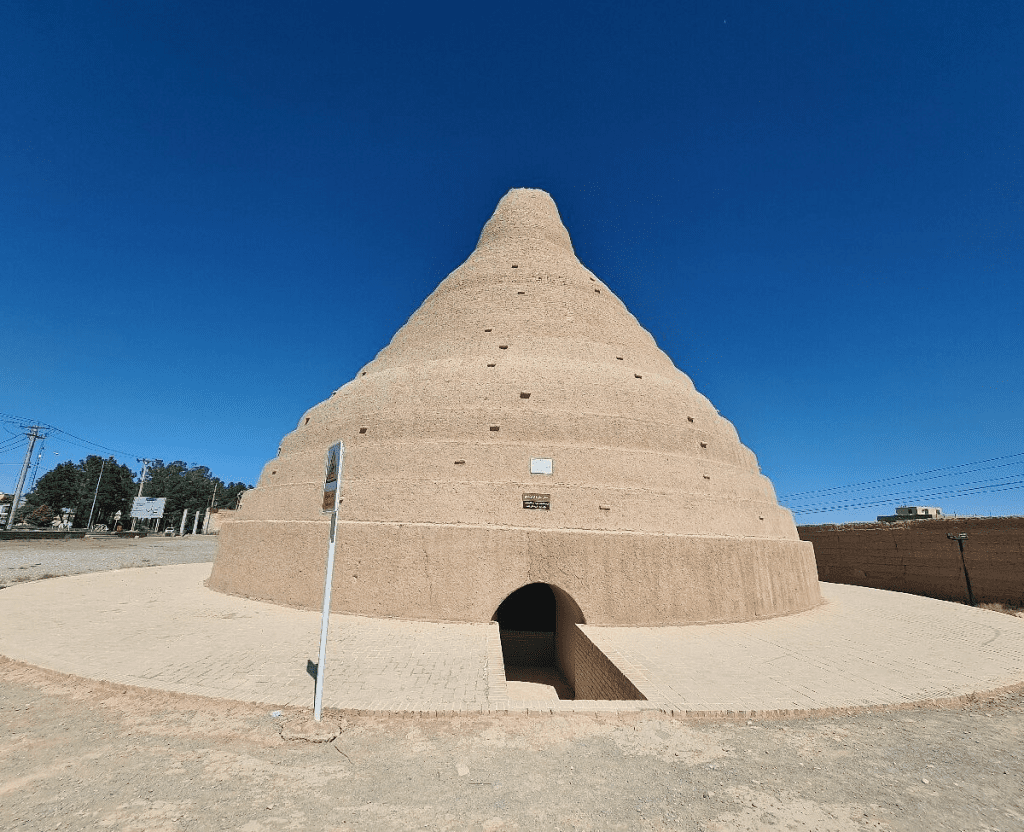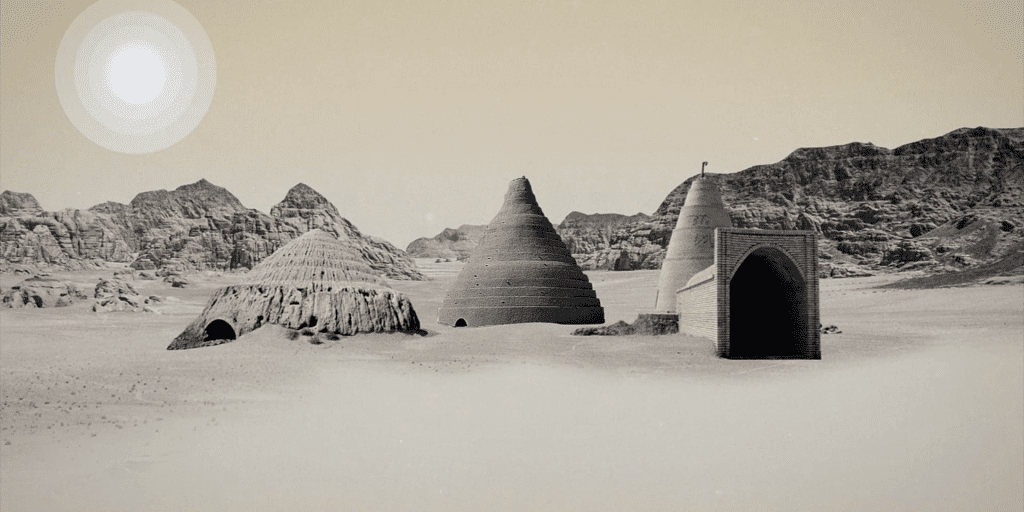Long before the age of electricity or modern refrigeration, ancient Persian engineers found a brilliant way to beat the brutal desert sun. Around 500 BC, in what is now Iran, these innovators developed a groundbreaking method to store ice yes, ice in the heart of one of the world’s hottest regions. Their solution? The yakhchal, a massive underground ice house that served not only as a cooling system but also as the birthplace of some of the world’s earliest frozen desserts.

Ingenious Design Born in the Desert
The word yakhchal translates literally to “ice pit,” but these were far more than simple holes in the ground. These towering, beehive-shaped structures were architectural marvels of their time. Built using a unique, heat-resistant mortar called sarooj a mix of clay, ash, egg whites, lime, and goat hair the thick, insulated walls (sometimes over 6 feet thick) protected the contents from the blistering heat of the Persian summer.

A typical yakhchal stood high above ground but extended deep below the surface. Its conical shape helped reduce air movement inside, preserving cold temperatures with minimal energy. Even more impressively, they could store up to 5,000 cubic meters of ice collected from nearby mountains during winter and transported down to the desert.
Video:
Ancient Ice-Making Machines Found In Persian Desert, The Yakhchāl
Ancient Air Conditioning and Natural Cooling
What made these ancient refrigerators truly remarkable wasn’t just their shape or insulation it was their use of passive cooling systems. Engineers tapped into natural forces to keep temperatures low without needing any fuel.
First, there were badgirs, or wind catchers. These tall, chimney-like structures funneled cool air down into the yakhchal and allowed hot air to escape. Then there were qanats, underground aqueducts that carried cold mountain water under the chambers, absorbing heat and helping maintain sub-zero temperatures inside the dome.
It wasn’t just about engineering it was about understanding how nature worked and using it to humanity’s advantage. These innovations rival today’s green building technologies and show just how forward-thinking Persian science truly was.

Frozen Delights Fit for Royalty
Storing ice was just the beginning. The Persian elite didn’t stop at cooling water or preserving perishables they invented one of the earliest known frozen desserts. Crushed mountain ice would be drizzled with sweetened fruit syrups to create refreshing summer treats for nobility and royalty.
Eventually, this practice evolved into a dish called faloodeh a delicacy made from rice noodles, semi-frozen syrup, lime juice, and rosewater. Faloodeh is still enjoyed in Iran today, a testament to the lasting culinary impact of ancient Persia.
And here’s the kicker: all of this happened over two millennia before Italian gelato or American ice cream ever existed.

A Masterpiece of Sustainability
In a world now increasingly focused on sustainability, the yakhchals stand out as a prime example of eco-conscious architecture. No electricity, no harmful chemicals just ingenuity, materials science, and a deep understanding of the environment.
Video:
The Genius Design of the Ancient Persian Yakhchal | 2500 Year Old Freezers in the Deserts of Iran
Some yakhchals are still standing today, weathered but strong. These remnants of ancient civilization continue to attract architects, engineers, and historians from around the globe who are eager to learn from their design. They serve as both a technological achievement and a symbol of human adaptability in the harshest conditions.
Legacy That Still Inspires
So often, we think of ancient civilizations as primitive, but the Persian ice house flips that narrative on its head. In the middle of one of Earth’s hottest landscapes, they didn’t just survive they thrived. They built massive structures that could store ice in 110°F (43°C) weather. They turned necessity into invention and created systems so efficient that modern designers are still taking notes.
Next time you scoop a serving of ice cream or enjoy a frozen lemonade on a hot day, remember that the roots of that experience trace back not to a modern lab or kitchen but to the sands of ancient Persia, where people learned to make ice in the desert.
And they did it 2,500 years ago.


